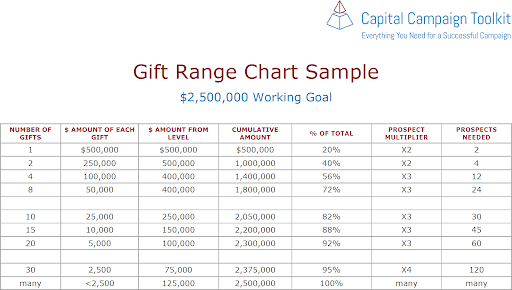A guest post by Christina Marmor at Mogli
According to the latest nonprofit technology reports, 62% of nonprofits use SMS/text messaging for their organizing efforts while 22% utilize text-to-give for fundraising. These are impressive numbers, but popularity doesn’t always equate to results. If your nonprofit hasn’t yet tried text marketing or fundraising, the first question on your mind is likely does it work?
While the answer to this question can vary depending on your audience’s preferences and the SMS strategies your organization uses, the general consensus is yes.
In this article, we’ll explain why SMS works for nonprofits by diving deeper into the effectiveness of texting donors for marketing, stewardship, fundraising, and more.
Text messages have a 98% open rate.
One of the main reasons texts are effective for a variety of nonprofit needs is that they have impressive open rates—98%, compared to email’s average of 20%. This means that many more of your nonprofit’s supporters will read the messages you send via text message than those from other channels.
Plus, Mogli’s SMS marketing guide explains that beyond high open rates, other text marketing benefits include:
- High click-through rates. Once supporters open a text message from your nonprofit, they’re also more likely to click on the links. Texts have an average 19% click-through rate, meaning that these messages can drive action from your supporters more effectively than those sent via email and other channels.
- They’re easy for staff to send. With an SMS marketing app, your nonprofit’s staff can easily send, receive, and track text messages to and from supporters. Since texts are naturally shorter and less formal than other communication methods, you can spend less of your valuable time writing the message’s content, too.
- They’re easy for supporters to read. Text messages are only a few sentences long at most, so donors don’t have to spend much time or brainpower to read them. Taking this work off your supporters’ plates makes them more likely to read and engage with your messages.
Because text messages simplify communication for both you and your supporters, they’re highly effective for getting urgent messages across, checking in with donors, and spreading the word about important cause-related updates.
SMS provides easy two-way communication.
Texts aren’t just effective for sharing information—they also provide opportunities for two-way communication, helping you create positive personal interactions and ultimately build lasting relationships with donors. Because texts are highly personal and easy to respond to, supporters can easily text back quick questions or feedback. This allows your nonprofit to continue the conversation and learn more about supporters in the process.
For example, take a look at the following example of what a text exchange between an animal rescue nonprofit and a donor with questions about a fundraising campaign might look like:
- Nonprofit: Imani, we’re launching a fundraiser to provide local animal shelters with brand-new leashes, litter boxes, and pet toys. Can we count on your support?
- Donor: I can’t donate money right now, but I have extra cat toys that my cat doesn’t like. Can I donate those?
- Nonprofit: Yes! We accept both monetary and in-kind donations, as long as they’re new or gently used. Find a drop-off location near you by following this link.
- Donor: Perfect, thank you!
- Nonprofit: No, thank you! We appreciate your generous support for our community’s furry friends in need 🙂 Let us know if you have any more questions about donating!
This exchange quickly answered Imani’s questions, established a positive rapport, and resulted in an in-kind donation to the organization.
You can increase texts’ relationship-building potential further by leveraging a text marketing tool that integrates with your donor database (such as a Salesforce SMS app if you use Salesforce for Nonprofits). This way, you’ll be able to automatically record data from your text interactions in individual donor profiles. Then, you can reference this data in later outreach to show donors that you listen to them and further improve your relationships.
Texts are versatile and fast.
Finally, the versatility and speed of SMS make it effective for a wide variety of nonprofit needs and goals. It goes beyond promoting your fundraising campaigns—you can also use texts for general marketing, donor stewardship, advocacy, and more.
For instance, one nonprofit might use SMS messages to do all of the following at different times:
- Fundraise directly over text using text-to-donate campaigns.
- Personally invite supporters to events and volunteering opportunities.
- Share educational resources to spread awareness of their cause.
- Thank donors with immediate, personal thank-you text messages.
- Ask supporters directly for feedback on events, fundraisers, and more.
- Send intuitive text surveys to learn more about supporters’ opinions.
- Remind donors about event and volunteering registration deadlines.
And these uses are just the beginning! Text messages are highly flexible, and recipients are more likely to read texts within minutes while letting emails pile up in their inbox’s promotions folder. This means that for any message you want supporters to read and act on quickly, text messages are the answer.
Texting donors does work, especially when you personalize messages and send content that aligns with supporters’ unique interests. To get started with text marketing, look for a texting app or solution that meets your organization’s needs, then brainstorm ways to incorporate texts into your multichannel marketing strategy. When you add SMS to a comprehensive communication plan, you’ll be able to better connect with donors and holistically improve your relationships.
 Christina Marmor – Vice President of Marketing at Mogli
Christina Marmor – Vice President of Marketing at Mogli
Christina is a tenacious marketing leader who combines grace, grit, and creative joy to drive innovation, evolve mindsets, and accelerate transformation. She is obsessed with personalizing experiences to drive connection and engagement. Christina is a life-long figure skater. When not championing Mogli, you’ll most likely find her on a lacrosse field cheering on her son or at the ice rink supporting her daughter’s figure skating journey.






